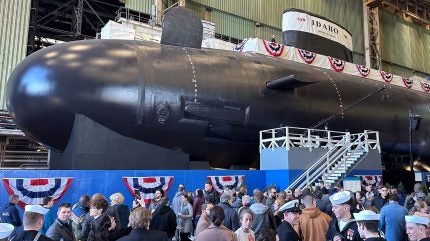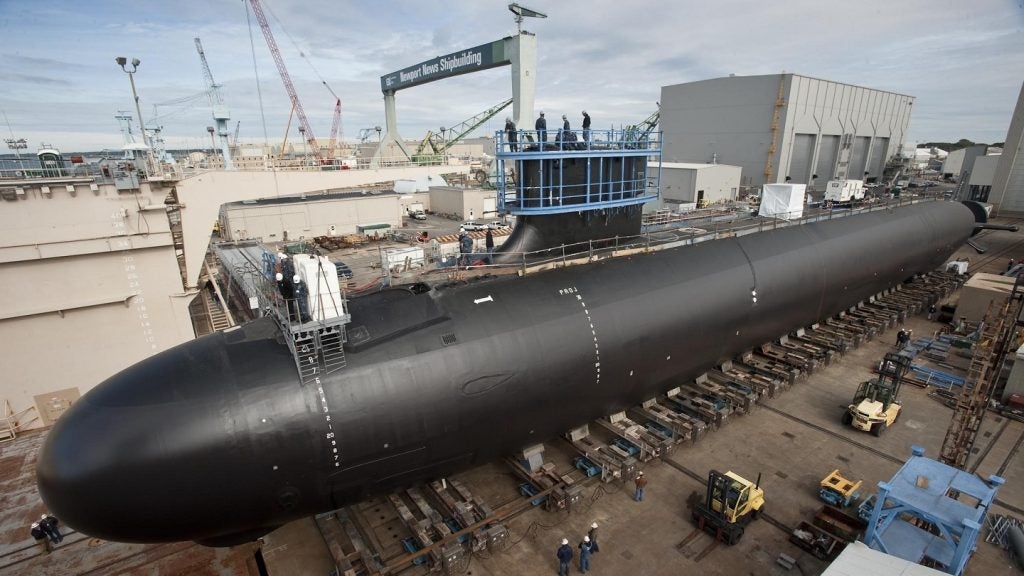
The US Navy (USN) has christened its newest Virginia-class nuclear-powered attack submarine (SSN) the future USS Idaho, during a ceremony on 16 March at General Dynamics Electric Boat, in Groton, Connecticut.
According to a US Department of Defense (DoD) release on 15 March, the submarine, which began construction in 2017, will be the 26th Virginia-class fast attack submarine and the fifth USN ship to be christened with the name Idaho, which ironically is a land-locked US state.
The last USN ship named Idaho was battleship BB 42, commissioned in 1919.
Vessels christened by the USN but not yet commissioned in service are known as Pre-Commissioning Units, or PCUs.
The USN’s Virginia-class submarines are built to operate in the world’s littoral and deep waters while conducting anti-submarine warfare; anti-surface ship warfare; strike warfare; special operations forces support; intelligence, surveillance and reconnaissance; irregular warfare; and mine warfare missions, stated the DoD.
Currently, the USN maintains 22 Virginia-class submarines in service, the latest being the Block IV series, with a further 16 submarines at various stages of commissioning, construction, or else have received funding approval.
In early March, fellow US submarine prime HII announced the completion of initial sea trials for the Virginia-class attack submarine (PCU) New Jersey, which is schedule to enter USN service in April this year.
US Presidential Budget produces mixed bag for US Navy
In the FY2025 US Presidential Budget Request published in March it was revealed that the US administration had put forward funding for just a single Virginia-class SSN in FY2025, a reduction from the earlier forecast two hulls, for around $3.7bn.
It is thought that through to FY2029 the US Navy will be seeking two Virginia-class submarines in each year’s budget request.
Elsewhere in ship construction, the DoD requested to procure an additional five vessels in FY2025; two Arleigh Burke-class destroyers, one Constellation-class guided-missile frigate, one San Antonio-class amphibious transport dock, and one medium landing ship.
The request also continued incremental funding for the third Ford-class carrier, USS Enterprise, and fourth Ford-class carrier, USS Doris Miller, while continuing funding of the second Columbia-class submarine, although no FY2025-specific funding was committed to the Columbia programme.

For aircraft procurement, the FY2025 budget requested $16.2bn in support of the procurement of 75 aircraft, including 26 F-35 stealth fighters, 19 CH-53K helicopters, three MQ-25 uncrewed air-to-air refuelling drones, among other airframes.
According to the USN the FY2025 budget request reflected “a large investment in the health and supply chain of the industrial base, including the investment of $3.9bn in FY25, and $11.1bn across the FYDP for the Submarine Industrial Base, $227m into the weapons industrial base and $407m in fleet readiness centers infrastructure modernization and optimisation”.
Concerns have previously been raised by senior US administration officials about the ability of the country’s industrial base to support the planned naval programme in the years ahead, amid significant supply chain challenges.








